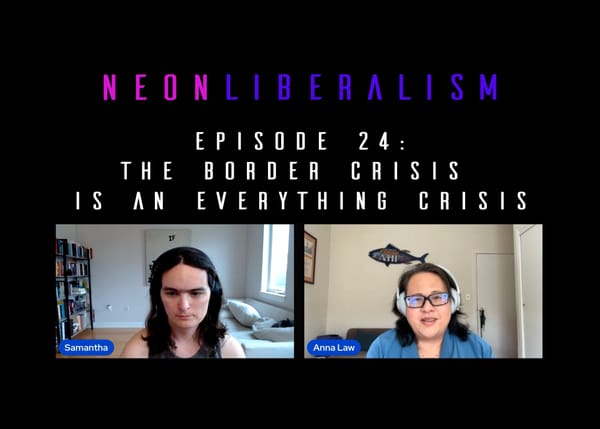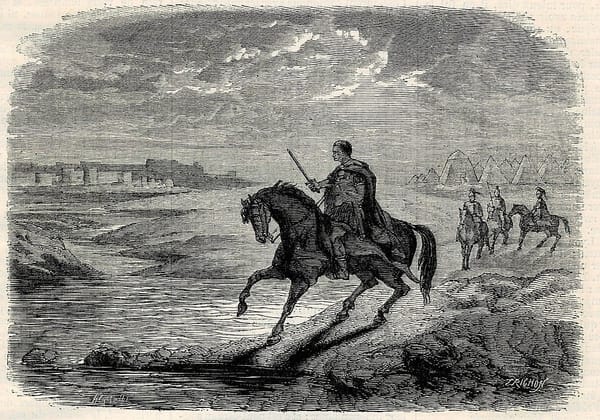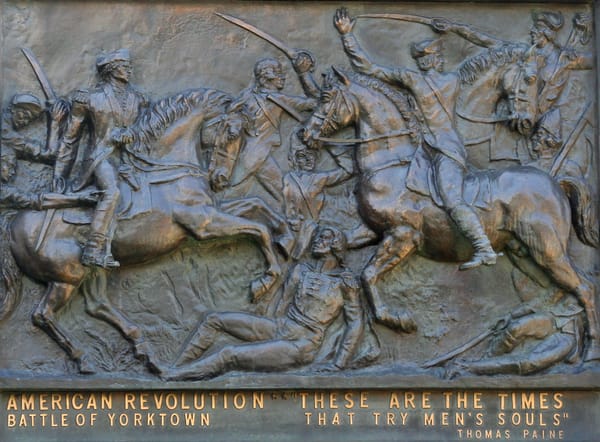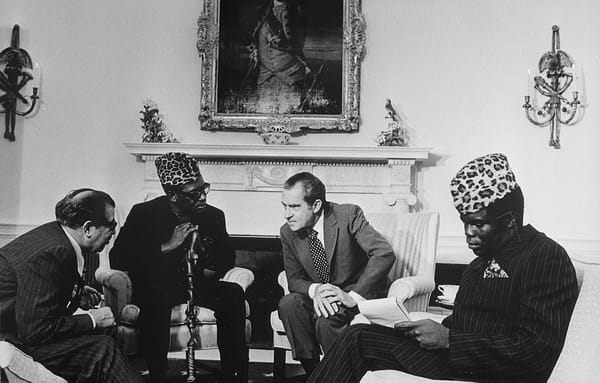Thor: Ragnarok, a Liberal Allegory
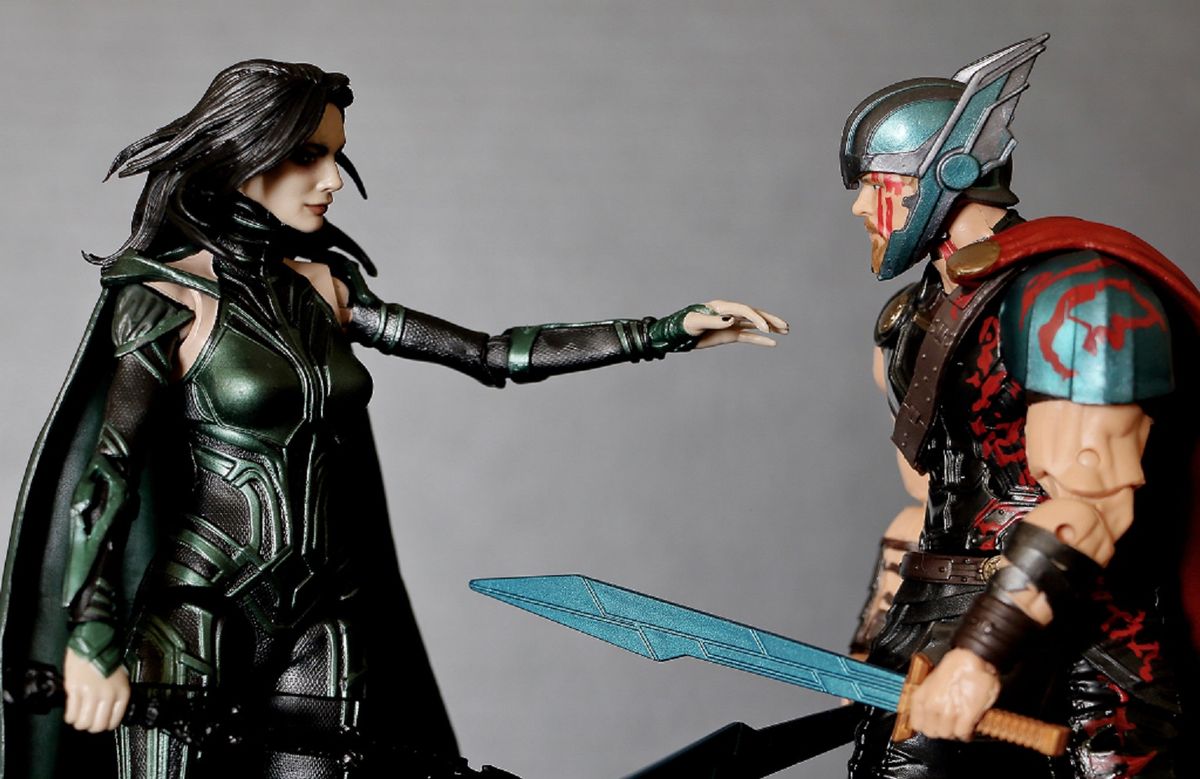
TaLynn Kel argues at The Establishment that Thor: Ragnarok is really a subversive takedown of white supremacy and colonialism. Spoilers follow. Hela, the film’s villain, tears off the mask of beautiful Asgard to reveal something wicked.
As Hela points out in one particularly stunning scene, the spectacular gold of the Asgardian Palace was bought through brutal conquest and war. Before becoming ostensibly “peaceful,” Odin used his own daughter as his executioner, mercilessly taking lives to achieve his place in the kingdom. The he stashed the murdered bodies in an underground vault, never to be spoken of again.
If that sounds familiar, perhaps you know the history of colonialism, including in the United States, where we tout our exceptionalism while ignoring the violence it was built upon.
Kel quotes Hela* as the theme for her analysis, “Proud to have it. Ashamed of how he got it.” Kel goes on to remind us of the war, slavery, colonialism, genocide, and general brutality that Western and specifically American dominance is built upon.
So much patriotism masking American violence. So much American pride harboring inhumane behavior. So much blood flowing freely within this country — sanctioned violence, glorified violence, artistic violence. A country full of vicious monsters convinced they are saviors. Just as Asgard presented itself as the “benevolent” ruler of the Nine Realms, saturated with the blood of all that was conquered, America asserts its “dominance” through worldwide violence under the mask of democracy. The United States is a violently racist thunderdome, where only white people and their agents of white supremacy are armed.
Do read the whole thing. I substantially agree, though as a liberal I believe these forms of domination and violence were contrary to the best conceptions of liberalism we have available to us today. This is not a No True Scotsman issue: there’s no doubt Enlightenment and liberal values were — and in many cases still are — tightly entwined with racism, sexism, and other oppressive structures of belief and practice. Kel’s analysis is a great starting point, but Thor: Ragnarok can teach us much more about the situation of the modern liberal.
The conflict within
The earnest liberal of today recognizes the damning history of racial liberalism — the idea that racism is not an unfortunate deviation from liberalism but has been baked into the ideas, practices, and institutions of liberalism from the very beginning — and liberal complicity in colonial atrocity and oppression by race and sex. But they also point to the real and powerful gifts liberal ideas have bestowed. The open society of democracy, markets, and other inclusive liberal institutions have given us compounding economic growth. This growth has been unevenly spread, to be sure, and has generated a cascading set of environmental problems. But economic growth has ultimately lifted billions of people out of grinding poverty. And it’s not just a matter of money. Health, opportunities, and quality of life as measured by virtually any index have vastly improved in societies touched by liberal institutions. The economic growth begotten by liberal institutions adheres to a naturally inclusive logic. As liberal economist Tyler Cowen argues, compounding economic growth over the long term enables us to transcend many (though not all) conflicts over clashing preferences and values, as rising abundance simply obviates certain painful choices. To take an example, feminist values may have always demanded greater autonomy and liberation from domestic drudgery, but after the growth-driven technological innovations of household appliances, the economic need to chain someone to the home for work was significantly lessened (though women still do a disproportionate amount of housework).
As poverty declines, people start caring about such things as human rights and environmental degradation. https://t.co/NzWO5iQagH
— HumanProgress.org (@HumanProgress) December 27, 2017
Multikulti Asgard
Emphatically, none of this justifies the horrors of colonial, war machine liberalism. But it does suggest there is something truly vital in liberalism that must be salvaged. Kel suggests maybe Asgard really did need to burn, referencing the fire-demon Surtur’s destruction of Asgard at the film’s conclusion. But it’s worth looking at this Asgard. Odin is condemned for his butchery, but he really did take pains to build something beautiful, prosperous, and (apparently) inclusive after the smoke cleared. He sends Thor to earth to protect humanity. And he apparently opens Asgard to diversity in some sense. Asgard is not the land of monochrome Scandinavians one might expect, but multiracial, though it’s unclear how much multiculturalism is implied.
The mighty, anti-fragile Thor
The character of Thor offers a model for how the heirs of privilege can move forward to a more just world. When Thor learns of the destructive history of Asgard’s ascension, he spends no time on denial, and he doesn’t try to justify or cloak Odin’s violence. Consider the following exchange Thor has with Valkyrie shortly after Thor’s capture:
Valkyrie: Look, I already faced her once back when I believed in the throne, and it cost me everything. That’s what’s wrong with Asgard. The throne, the secrets, the whole golden sham.
Thor: I agree. That’s why I turned down the throne. But this isn’t about the crown. This is about the people. They’re dying and they’re your people too.
Thor has just learned that his childhood and his inheritance was built on lies, death, and oppression. When white folks in real life (Midgard) begin to learn this same fact, there is a powerful temptation to deny it, explain it away, or even justify it. Thor eschews this path, and neither does he flagellate himself with guilt, as so many critics allege is demanded of white people by the social justice left. Thor just gets to work defeating the present evil and saving the lives in danger.
Destroying the tools of oppression
There’s a symbolism to the destruction of Mjolnir. Thor’s hammer was a weapon of destruction. It was the same stuff of which Odin used Hela to subjugate the Nine Realms. Of course Hela, the goddess of death and master of destruction (Fenris the Wolf), could overcome Mjolnir’s power. It was her power all along. But when Thor lost Mjolnir, he had to adapt and find another source of strength. “Are you Thor, God of Hammers?” Odin’s ghost asks Thor in a moment of doubt, “That hammer helped you control your power, focus it. But it was never the source of your strength.” Mjolnir was a weapon, but not Thor’s true strength. White male supremacy is a weapon, one best destroyed, not the true strength of liberalism, which is the liberatory power of recognizing the moral equality of all persons.
Unlike the bleak original myth, there is hope in Marvel’s Ragnarok. In an impressive reinterpretation of the Norse eschaton, Surtur is unleashed to destroy Asgard, the source of Hela’s power, and as the throne of Odin’s ill-gotten power, arguably a symbol of domination. If Hela represents the racist and colonialist violence of liberalism’s origins, the clever, purposeful destruction of Asgard by Thor by way of Surtur represents the disavowal of violence, domination, and oppression from the liberal toolkit. For the people to survive, these ideologies must be destroyed (preferably with fire).
In a denouncement of “blood and soil” identity and a timely affirmation of the dignity of migrants, Thor: Ragnarok leaves us with the image of Asgardians as a diverse people, intact even without their homeland. The Asgardians are now adrift in space, refugees in search of new foundations. This too is the condition of the modern liberal: aware of our evil history, ready to begin the painful work of weaning ourselves off comforting but poisonous mythologies, and adrift in the space of ideas, searching for firmer ground on which to rebuild.
*For the love of gods I have to complain this should really be Hel, not Hela. That’s on Marvel’s conscience.
Featured image is “Hela“, by Hannaford.

